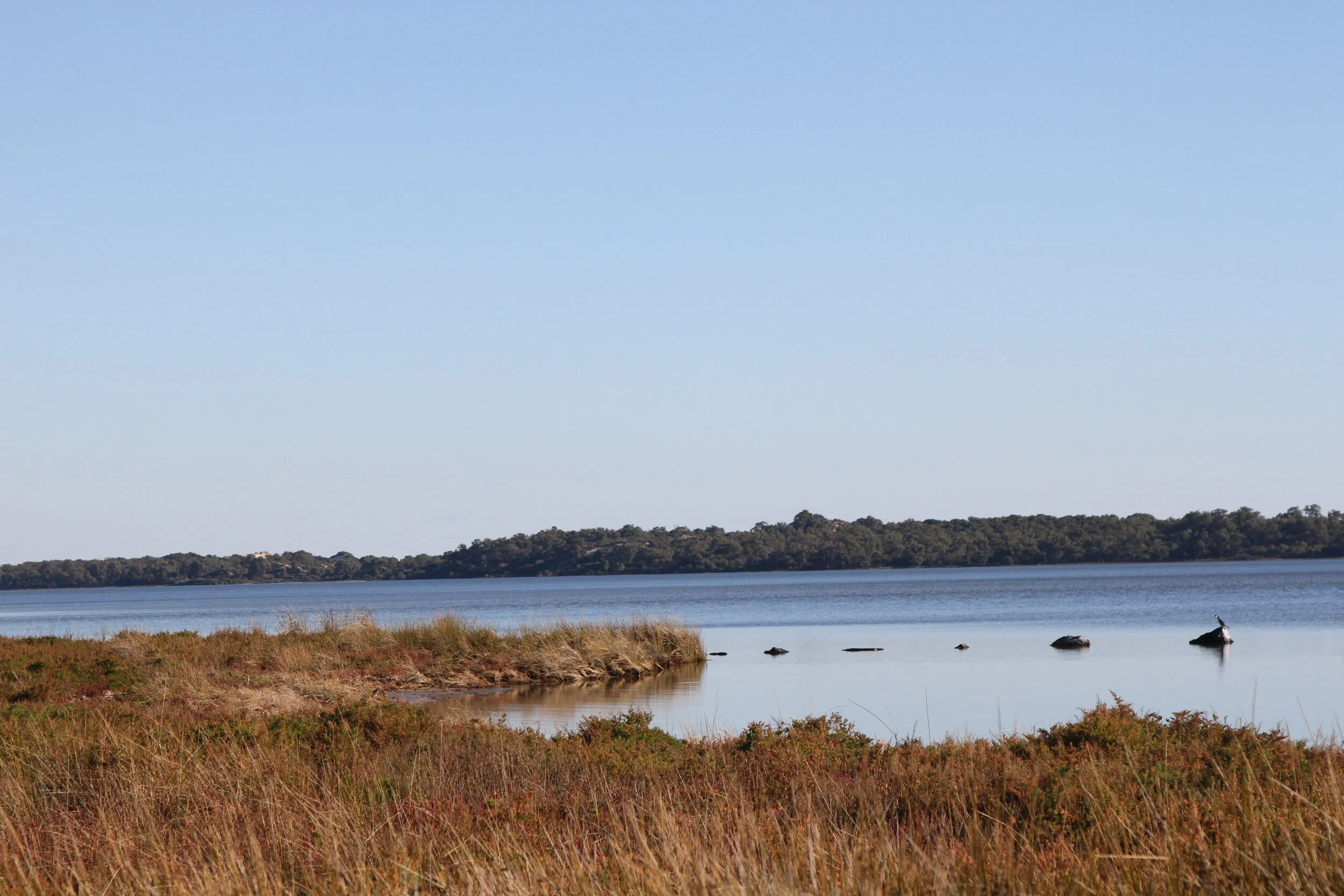
Shorebirds
Monitoring the food availability for shorebirds in the Leschenault Estuary.
The Leschenault Estuary, located in the southwest of Australia, is one of the biggest waterbodies in Western Australia. Despite being highly modified, this coastal wetland has significant ecological, heritage and recreational functions and values. There are several aboriginal heritage sites within the area such as the Preston and Collie rivers. It is considered a significant tourist attraction and as a recreational area for the practice of water sports, especially recreational fishing. From an ecological point of view, it is an important fish nursery thanks to the extensive seagrass meadows and other aquatic fringing vegetation. It is also the State’s southern-most location for the white mangrove. In addition, it appears to act as a waterbird refuge in summer, at times when other inland wetlands are dry, with more than 3000 waterbirds using the estuary in February.
One distinctive group of waterbirds that rely on the Leschenault Estuary are shorebirds or waders. Shorebirds inhabit mostly coastal and inland wetlands where they feed by probing with their beaks into the sediment to extract the benthic macroinvertebrates that they depend upon. Based on their lifestyle, two groups are recognised: migratory shorebirds, which breed in distant regions from their non-breeding areas; and resident or nomadic shorebirds, which spend their entire life cycle in a single region. Many migratory species spend the non-breeding season in the southern hemisphere and migrate to high latitudes such as the Arctic to breed during the southern winter. To fulfil the extremely high energetic demands imposed by long distance migrations, migratory shorebirds depend on specific stagging and stopover sites along the flyway where they replenish their reserves. However, the dependence on specific habitats and locations though their annual cycle makes this particular group of animals highly sensitive to habitat loss, destruction and degradation.
During the non-breeding season, the Leschenault Estuary is host to three of the four species recognised as critically endangered, the Eastern Curlew, Bar-tailed Godwit and Great Knot.
The main objective of this project is to monitor the food availability in the Leschenault Estuary for migratory shorebirds to assess temporal and spatial changes. This will be conducted with help from volunteer citizen scientists, who will be engaged to both collect samples from the Estuary and then analyse these samples in a laboratory. The results will help to serve as a baseline to develop future conservation, management and monitoring plans of the Leschenault Estuary.
This project is a collaboration with the Leschenault Catchment Council, Edith Cowan University, Birdlife Bunbury and is supported by Tronox.
Great Knot (Calidris tenuirostris) feeding in the Leschenault Estuary. Photo Jane Putland.
Curlew Sandpiper (Calidris ferruginea) foraging in the Leschenault Estuary. Photo Jane Putland.





